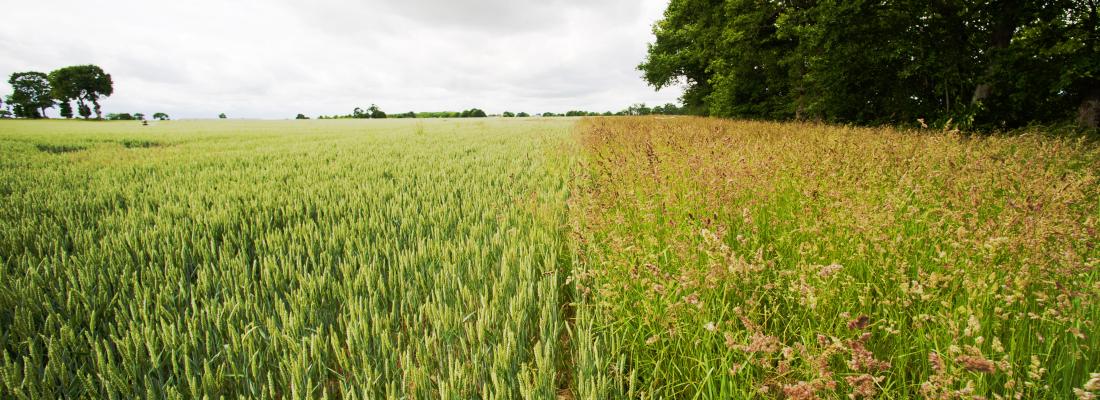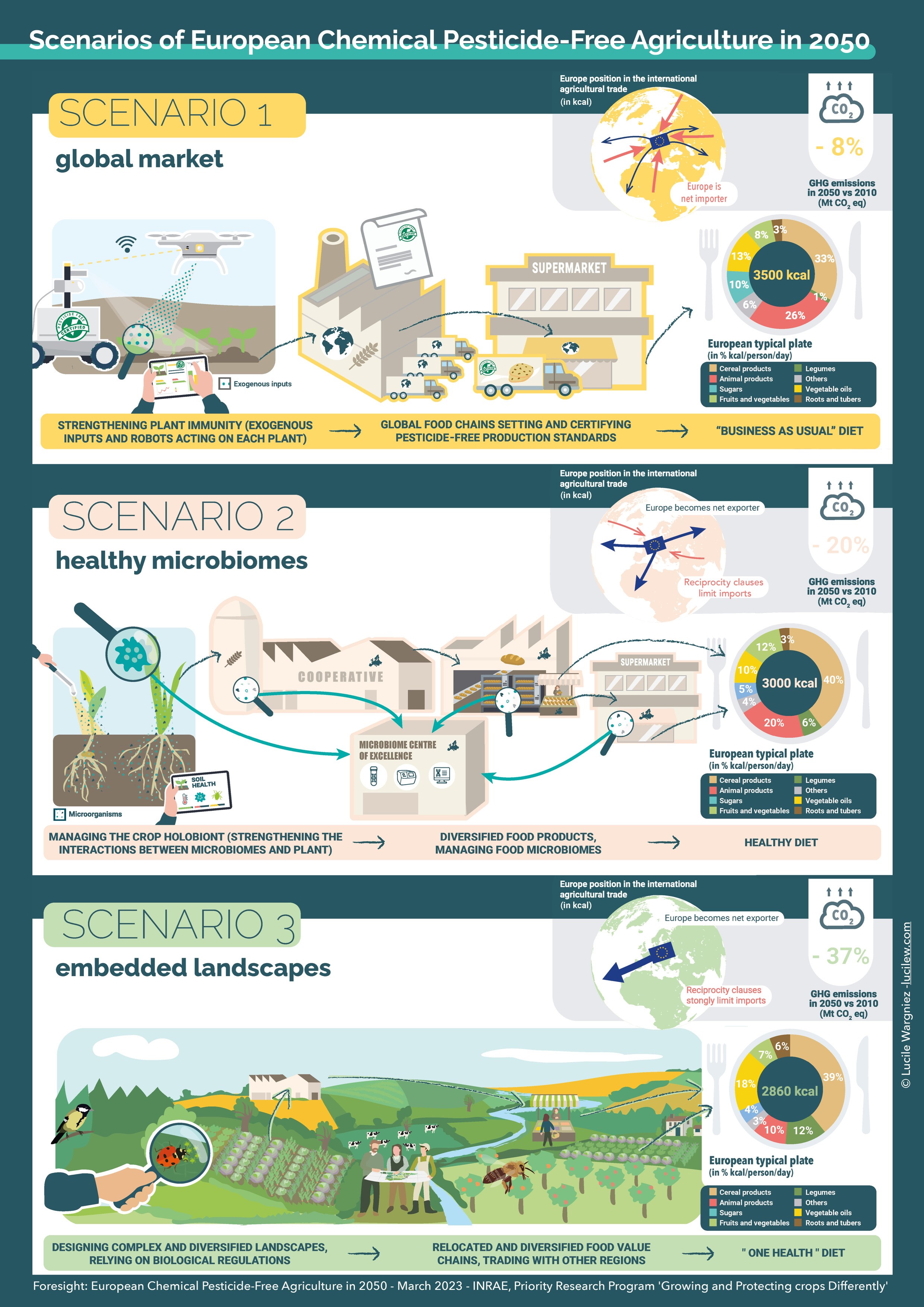Agroecology Reading time 3 min
“European Chemical Pesticide-Free Agriculture in 2050”: the results of a groundbreaking foresight study
Published on 21 March 2023

While the negative impacts of chemical pesticides on the environment and human health are well documented, European policies are struggling to make progress towards the target of cutting chemical pesticide use by 50% [1] by 2030. This observation spurred 144 experts, scientists and stakeholders to work together for two years to produce a foresight study that sought to change the model and design agricultural and food systems without any chemical pesticides by 2050.
Chemical pesticides are essential in today’s conventional agricultural systems. Drastically reducing their use to the point of completely eliminating them from agriculture is a thorny issue for which there is no simple solution. This foresight study goes further in terms of the ultimate goal and time frame by asking whether effective crop protection in pesticide-free agriculture is feasible in Europe by 2050 and how to transition to this type of agriculture. Under what conditions would such a transformation be possible? What would the impacts be on production, land use, the trade balance and greenhouse gas emissions? This foresight study, conducted as part of the “Growing and protecting crops differently” Priority Research Programme (PPR) and in conjunction with the “Towards a Chemical Pesticide-Free Agriculture” European Research Alliance,[2] aims to shed light on all these issues and to suggest pathways forward. It offers three scenarios of pesticide-free agriculture for Europe in 2050, each with a transition pathway and examples of these scenarios and pathways in four European regions, along with a quantitative evaluation of their impacts in Europe:
- Scenario 1: “Global market”: global and European food value chains based on digital technologies and plant immunity for a pesticide-free food market.
- Scenario 2: “Healthy microbiomes”: European value chains based on plant holobiont, soil and food microbiomes for a healthy diet.
- Scenario 3: “Embedded landscapes”: complex and diversified landscapes and regional food value chains for a one-health food system.
For each scenario, pesticide-free cropping systems make use of crop diversification, biocontrol development, the choice of suitable crops and varieties, digital technology and agricultural equipment, and monitoring systems to anticipate the arrival of pests.
Differentiated impacts measured for each scenario
One of the key aspects of this foresight study is that it quantified the impacts of each scenario on agricultural production, land use, greenhouse gas emissions and trade, based on the results of simulations of a biomass equilibrium model at the European and global scales.
With regard to European agricultural production, calorie production varies from −5% to +12% depending on the scenario, with a balance to be struck between reducing the consumption of animal products and maintaining grasslands. In terms of the trade balance, the overall impact of scenarios 2 (Healthy microbiomes) and 3 (Embedded landscapes) gives Europe room for manoeuvre to secure its food sovereignty and export its products. The three scenarios reduce greenhouse gas emissions by −8% (scenario 1), −20% (scenario 2) and even up to −37% (scenario 3). All three pathways lead to an increase in the carbon stock in soils and biomass, which will contribute to carbon neutrality by 2050 for the agricultural and agri-food sector in scenarios 2 and 3.
The keys to success: coherent European public policies, the involvement of all value-chain players and risk sharing among stakeholders
Effective crop protection without chemical pesticides relies on several levers that must be activated in tandem: crop diversification over time and across space, the development of biocontrol products and biological inputs, appropriate varietal selection, farm equipment and digital tools, and tools for monitoring pest dynamics and the environment. Biological regulation mechanisms at the soil, field and landscape levels should be favoured, as well as preventive measures against pests.
Specific case studies in Italy, Romania, Finland and France helped establish transition pathways that showed that the entire food system must be considered in this redesign and involve all players across the chain, from producers to consumers who must change their diets and authorities responsible for public and regulatory policies. Transitioning to chemical pesticide-free agriculture will require a coherent mix of European public policies to reduce pesticide use articulated with other policies such as food policies, support the transition through a redesign of the Common Agricultural Policy (CAP) and economic instruments that can be leveraged, and create pesticide-free markets through trade agreements. Finally, the transition will need the various stakeholders to share the risk of transforming their cropping systems and the agricultural and agri-food supply.
The scenarios explored in the foresight study should help decision-makers and the scientific community to identify new research avenues to build a future chemical pesticide-free European agricultural and agri-food system by 2050.

Reference:
Mora O. (coord.), Berne J.A., Drouet J.L. et al. (2023). European Chemical Pesticide-Free Agriculture in 2050. Foresight study summary – INRAE (France). 14 pages.
